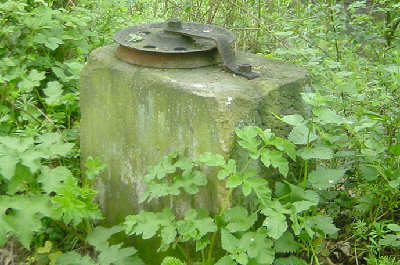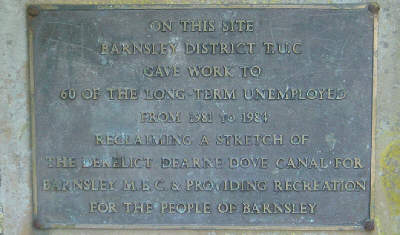The Barnsley Canal was approved by Parliament in 1793. The section between Barnsley and the Aire and Calder Navigation near Wakefield opened in 1799, with the section from Barnsley to Barnby Basin opening three years later.
It was a broad canal with 15 locks between the River Calder and the main level at Walton. A further 5 locks took the canal up to Barnby Basin, with water needing to be back-pumped up this flight, as the company was not allowed to take water from the Dearne at Barnby. The main level was supplied from Wintersett and Cold Hiendley Reservoirs.
Half a mile east of Barnsley, the canal crossed the River Dearne on a high five arch aqueduct. On the south side of this aqueduct was the junction with the Dearne and Dove Canal, which opened in 1804 and ran to the River Don Navigation at Swinton.
The colliery at Barnby ran into difficulties fairly soon after the canal opened, but the company built a tramroad from Barnby Basin to Silkstone Colliery, which produced good quality coal, helping the canal to be very successful. Barnby Colliery later re-opened and other collieries close to the canal's route through Barnsley, Monk Bretton and Royston added to the prosperity.
As a result of competition from the new railway companies, the Barnsley Canal was leased and later bought by the Aire and Calder Navigation Company, which improved the waterway and enlarged the locks, with trade picking up again for a number of years. In 1893, the section of canal above Barugh Locks was closed as most of the trade here had been lost to the railways.
Although trade on the rest of the canal continued through to World War II, the canal suffered from constant subsidence problems due to mining, with the banks needing to be built up. Subsidence caused a spectacular breach at the southern end of Barnsley Aqueduct in 1911, which closed the canal for eight months. Another huge breach occurred at Littleworth in 1946 which directly led to the canal's closure in 1953. The company had decided that it would be cheaper to compensate the canal's users than to constantly repair the canal. Barnsley Aqueduct was demolished a year later, as it was showing large cracks and a sag due to mining subsidence.
One of the unusual features of the Barnsley Canal was the use of pulleys mounted on stone blocks on sharp bends, between the towpath and the canal edge. The idea was that as boats approached the corner, the tow rope would be fitted into the pulley. This would assist the steerer as it would prevent the horse from pulling the boat into the bank on the corner.

The pulley near Blue Bridge, Haw Park.
Such stone-mounted pulleys were put in place on all the sharp bends on the canal and at the junction with the Dearne and Dove Canal. It was an idea that may not have been easy to use as it would have required some physical effort to pull the tow rope into the groove on the pulley. There are a few isolated examples of similar pulleys on other canals, but vertical rollers on the inside of the towpath did the same job with no effort and are found on several canals, such as the Leeds and Liverpool.

The pulley near Clay Royd Bridge.
In the 1980s, a quarter mile stretch of the Barnsley Canal near Barnsley town centre was restored as part of a TUC scheme to provide work for long-term unemployed people. This laudable scheme has produced an attractive stretch of waterway which gives a sample of how things could be along the whole canal. Rather unfortunately, a plaque erected near the restored section gives the wrong name to the canal!

The plaque near the restored section.
The Barnsley Canal Group was formed in 1984, which became the Barnsley Dearne and Dove Canals Trust in 2000, to promote the restoration of this important historic element in the region's industrial heritage and the reinstatement a vital "missing link" in the national waterways network.